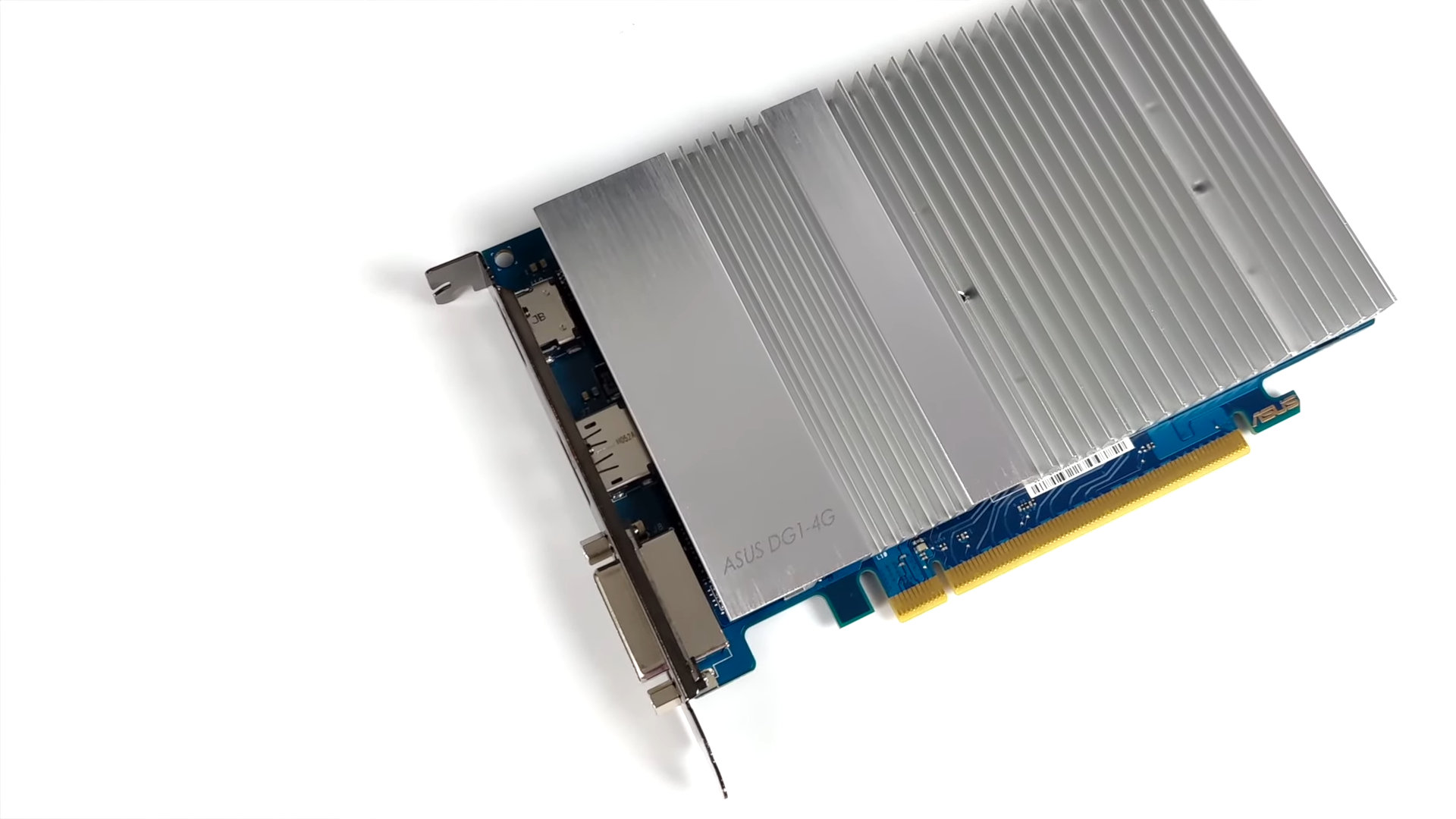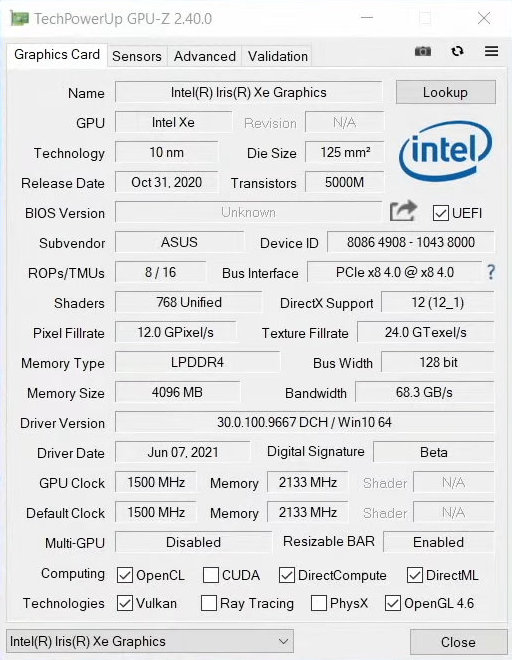ETAPrime has released the first ever review of the Intel discrete GPU. Previously, reviews of DG1 Software Development Vehicle (SDV) were shared but keep in mind that DG1 SDV is not available to the general public. As the name SDV suggests, the card was exclusively distributed to software developers. The purpose for this was to provide hardware support for software optimization of Intel’s Xe architecture.
The bad news is that the ASUS DG1 is only available in pre-built systems. This makes sense too because few motherboards support the Iris Xe. Since you can only get your hands on an ASUS DG1 graphics card through a pre-built system, ETAPrime purchased the 750 USD CyberpowerPC system for their review.
The ETAPrime’s system is powered by an Intel 11th Gen Core Rocket Lake-S (i5-11400F) CPU. The CPU is housed in an PRIME H410M-A/CSM motherboard. The ASUS DG1 (Iris Xe) based on Xe-LP architecture is responsible for the graphics. The card has 80 Execution Units. Unlike the DG1 SDV (96 EUs) the card is not a full silicon and the GPU-Z incorrectly reports 96 EUs (768 unified shaders).
However both the Iris Xe and DG1 SDV share the same 30W TDP and LPDDR4X-4266 RAM. This low power consumption means that passive cooling is sufficient for them and no additional power ports are required since the card is powered through the slot.
As far as the scores are concerned, the test was conducted using 3DMark software and other popular games. The graphics card scored 5837 points in Fire Strike, 1630 graphics points in Time Spy, and 21313 points in Night Raid. The official 3DMark ranking uses Time Spy score and ASUS DG1 graphics card appears to be 31% faster than mobile Iris Xe G7 graphics with 80 EUs.
This score can also be compared with Radeon HD 7870 or GeForce GTX 760. As for the synthetic benchmarks, the card’s performance is similar to a mid-range GPU from the 2012/2013 era but with a 6x less power requirement. ETA later compared the GPU to Ryzen 7 5700G integrated graphics where both solutions offered nearly identical performance.
During the game test, the ASUS DG1 did well in most of the titles running at 1080p in low to mid settings.





